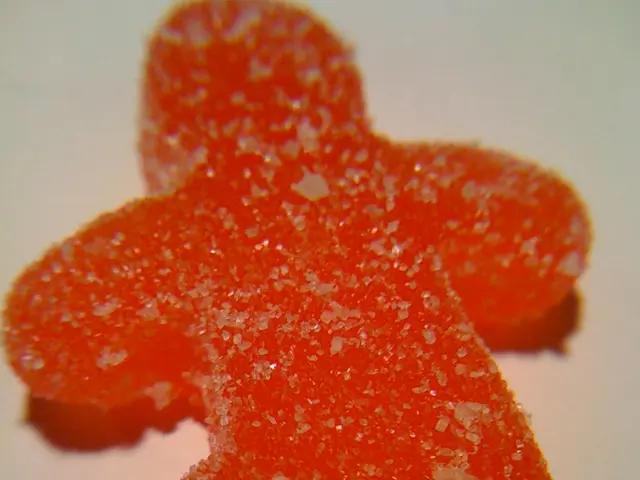Chlorhexidine use for canines: Detailing advantages and applications
Dog Owners Should Understand Chlorhexidine: An Essential Antiseptic for Pets
Pet owners who have battled bacterial skin infections in their dogs might have been prescribed a product containing chlorhexidine, a powerful antiseptic substance. Here's a guide to help you comprehend what chlorhexidine is, how it works, and its benefits for canine health.
Unraveling the Mystery of Chlorhexidine for Dogs
Chlorhexidine is a chemical compound that serves dual purposes as an antiseptic and disinfectant. The most prevalent veterinary usage is chlorhexidine gluconate, which has numerous applications. Since the 1950s, it has been widely employed and is available through prescription or over-the-counter.
Chlorhexidine's primary function is to clean and disinfect dog skin, thereby eliminating bacterial infections. At low concentrations, it impedes bacterial growth, preventing replication. At higher concentrations, it destroys bacteria by disrupting cell membranes. While it displays variable activity against viruses, chlorhexidine is especially effective in treating skin yeast infections in dogs (1).
Most chlorhexidine-infused shampoos and other products are generally safe for dogs when used correctly. However, caution is advised when using these products without veterinary guidance due to potential risks:
- improper use of concentrated liquid form can cause skin irritation and delay wound healing;
- chlorhexidine can be toxic to the inner ear, potentially causing deafness if instilled in the ear canal with a ruptured eardrum;
- if ingested, chlorhexidine may lead to vomiting.
Always consult a veterinarian before using chlorhexidine products. Should any issues arise during use, immediately cease application and consult local veterinary professionals.
The versatile applications of Chlorhexidine for Dogs
While cleaning and disinfecting dog skin is its primary purpose, chlorhexidine has various other uses:
- Treating skin infections, wounds, hot spots, or abscesses;
- Surgical preparation;
- Disinfecting surgical instruments;
- Oral rinse.
Chewable Solutions: CET Chews
Chlorhexidine comes in liquid and powder form, but it is often found in wipes, sprays, shampoos, rinses, mousse, gel, mouth rinses, and even dog chews called CET chews designed to reduce dental plaque and freshen breath. Chlorhexidine may also be combined with other medications, such as miconazole, for more effective infection eradication.
Some common chlorhexidine-inclusive products include:
- Cerasoothe CHX Antiseptic Shampoo: Formulated for treating bacterial skin infections in dogs;
- Clenz-a-Dent Chlorhexidine Rinse: Oral rinse designed to reduce dental plaque buildup and freshen breath;
- DOUXO® Chlorhexidine PS Micro-Emulsion Spray: Skin spray with antifungal, antibacterial, and anti-inflammatory properties for dogs.
In veterinary settings, the most common chlorhexidine types used are solution and scrub. Chlorhexidine scrub, also known as Nolvasan Surgical Scrub, is a soap solution for scrubbing a dog's skin before surgery. Chlorhexidine solution is utilized to irrigate wounds or abscesses and disinfect dog skin.
Other Pointers and Recommendations
When used properly, chlorhexidine is an exceptional antiseptic, but not entirely without caution or negative side effects. Some dogs may develop allergic reactions to chlorhexidine or skin sensitivity with repeated use. Be mindful of the instructions provided by your veterinarian when using chlorhexidine products on your dog, and consult them immediately should any problems arise.
- Lin, Qianyu et al. "Sanitizing agents for virus inactivation and disinfection." View (Beijing, China) vol. 1,2 (2020): e16. doi:10.1002/viw2.16
- Maynard, L et al. "Comparison of two shampoos for the treatment of canine Malassezia dermatitis: a randomised controlled trial." The Journal of small animal practice vol. 52,11 (2011): 566-72. doi:10.1111/j.1748-5827.2011.01124.x
Chlorhexidine is a valuable and commonly employed topical treatment for addressing bacterial and yeast/fungal infections in dogs, boasting an impressive safety profile when used appropriately.
References:
- Overall, chlorhexidine is effective in eliminating unwanted bacteria on dog skin, making it suitable for a variety of bacterial skin infections, thanks to its comprehensive antimicrobial properties.
- Chlorhexidine also displays antifungal abilities, particularly against dermatophytes like Microsporum canis, a typical fungal pathogen in dogs and cats. Research has shown that chlorhexidine combined with miconazole exhibits a synergistic effect, being more effective at inhibiting M. canis growth than either agent alone. This combination amplifies the antimycotic effect and is clinically used alongside oral antifungals for treating fungal infections.
- Side effects are uncommon but may include skin irritation or allergic reactions, especially when used repeatedly or for long periods.
Dog owners should be aware of chlorhexidine's benefits and potential side effects to ensure proper usage and optimal canine health.
- Incorporating chlorhexidine into health-and-wellness routines can prove advantageous for dogs, as its antiseptic properties contribute significantly to treating various bacterial skin infections, thanks to its broad-spectrum antimicrobial effects.
- The synergistic combination of chlorhexidine with antifungal agents like miconazole not only targets dermatophytes like Microsporum canis, but also exhibit heightened effectiveness at inhibiting fungal growth compared to each agent alone, making it a popular choice in veterinary settings for combating fungal infections.








